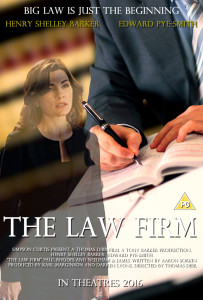This post is from an article I wrote for Legal IT Today magazine (you can download the issue in PDF format here) and was published in their March 2015 copy (issue #9).
Unfortunately due to work commitments I didn’t make it to either the “British Legal Technology Forum” or the “Inside Legal IT” events in London earlier this year, but if you did let me know what you thought of them in the comments.
Best conference ever attended? Well that would have to be the Microsoft Office 97 launch in the UK, I think it was held at the QE2 conference centre in London. This was Microsoft at its peak, no Apple or Google to be seen and the bar had yet to be raised by a Steve Jobs event. Since then every Legal IT conference I’ve been to has had this benchmark to measure against, some have come close most have come up short.
In my experience the early days of Legal IT conferences were poor. My first was what can only be described as a trade show held at the Barbican Exhibition Centre in London, I’m reliably informed it was called the “The Solicitors’ & Legal Office Exhibition”. It was relatively unmemorable, in fact the only way I remember it was back in 1998 was the image below of a caricature that Shaw’s legal office stationery were churning out on their stand! Other than this my recollection is a little vague but from what I remember it was just a hall full of vendors stands, people would come and dip in and out (usually during a lunch hour) rather than take a full day for the conference.

Thanks to a couple of “Legal IT historians” Chris Dale and Charles Christian answers to some crowdsourcing that there was the above show at the Barbican (which was bought by the LegalTech US owners eventually), then there was another than ran for a number of years in Islington. I also recall attending the latter “Legal IT Show” when it tried some regional variations. My local variant was held at the Royal Armouries in Leeds. But again all I remember was that it was the typical trade show format with nothing more than vendor stands. This was early internet days, so the lack of availability of product information online meant face to face was the norm I guess. But even so these early events weren’t a patch on that Microsoft event that had set my benchmark, in fact after a while I gave up on these general legal IT events and it wasn’t until 2010 that I attended another one.
However whereas the generic legal IT event had disappointed the vendors picked up the baton, especially when iManage merged with Interwoven and we got the “Gear Up” events in the mid 2000’s. I attended a couple of these, one in Florida and one in London and these were good, very good. There was a great mix of keynotes, product roadmap and specialist breakout tracks. Because the vast majority of Legal IT folk had come for a specific product the networking was great too. The Autonomy merger put pay to these events and unfortunately the user group format (albeit useful) hasn’t replaced Gear Up.
A couple of other vendors though have taken up this baton and crafted a couple of unique events worthy of mention. Bighand with their full day conferences in London and Manchester have managed to match the structure of those Interwoven events, good keynotes, product roadmap, good networking and good breakout sessions. Then there is Tikit with their Word Excellence Days, these are not product based but usually full of relevant customer led talks or panels on a range of pertinent topics (not just Word and document production).
Back to the general legal IT events and my return in 2010? This was a trip to the ILTA Conference in Las Vegas. And ILTA is something special, it has great keynotes, a huge range of smaller sessions on every topic imaginable in Legal, great networking opportunities and a vendor hall that has pretty much every legal IT solution on offer. The downsides are also due to its size. It’s difficult to catch everything you want to, the synopsis of sessions too can lead you to the wrong conclusions and into the wrong sessions. To get the most of ILTA you need to plan ahead, have multiple sessions for each time slot and leave one for another if it becomes obvious in the first few minutes the talk isn’t for you. Plan the vendors you want to see before, plan what you want to see when and if possible arrange some demos in advance. I attended a second ILTA conference in 2014 in Nashville and I wish I’d been more prepared up front. For me if you’re looking for a match to my Office 97 benchmark, then ILTA in the US is it. The other US show of note is the giant LegalTech in New York. I haven’t been myself and probably won’t, whether true or not I imagine it too much like those early days of Legal IT shows in London unfortunately.
So what about the UK shows? Well a few years back the LawTech Futures show shook things up a bit, it brought some fantastic keynote speakers and matched them with a good vendor hall and interesting mix of break out talks over three tracks. A very familiar format for those who have experienced ILTA.
The momentum seems to have continued across UK legal and has led to a great line-up of three big events for 2015, each with a different flavour.
In March we have the “British Legal Technology Forum”. The format follows a similar vein to LawTech Futures, unsurprising as the folks behind both are NetLaw Media. This year’s keynote is by Dr Michio Kaku. There are the familiar three stages and a vendor hall. It’s a tried and tested formula that works well. It’ll be interesting to see how the tracks go, across all conferences in the last few years the same old “disruptive, cost cutting, law needs to change” topics have been churned out. There are some great case studies to be told on mobility, service centres, document automation and legal project management. But I haven’t heard many yet at a conference.
In May we have a newcomer to the scene. The “Inside Legal IT” event. Now this could be interesting, it’s an attempt to forgo the keynotes and talks and focus on the vendor hall. Sort of back to the beginning with a twist, the twist is to inject some fun to try and facilitate the networking and discussion. I hope it works, if there is one problem I find with all the events it’s the vendor hall. The booth surely has to be the most awkward way to learn about new products and maybe this conference can shake this up.
Finally in November is the “ILTA Insight” event. I attended my first one of these last year and was pleasantly surprised. I had avoided previously as I’d already “driven the Golf” with the US ILTA show, surely the London one day version wouldn’t live up to it. But it was good, the format is keynotes, talks and vendors. Standard fare. But with the talks been run by ILTA firms it seemed to be more relevant and have real world examples that I want to hear.
To finish up I’m going to ask for a wish and ask a question. My wish for conferences, what I would like all the conference organisers to do is use technology! In a world of live streamed events it’s about time the organisers of all the Legal IT shows started using it. It’s impossible for large numbers of Legal IT staff from one firm to attend these events, especial from the firms in the north. It isn’t cost effective. But for a nominal fee I’m sure the online audience would be much bigger and with social media there is a massive opportunity for vendors to tap into this streaming audience. That’s my one wish.
And finally my one question, why compared to the US conferences do so few European folks tweet at our conferences? You can almost have a second conference online with the discussion generated from US events.




